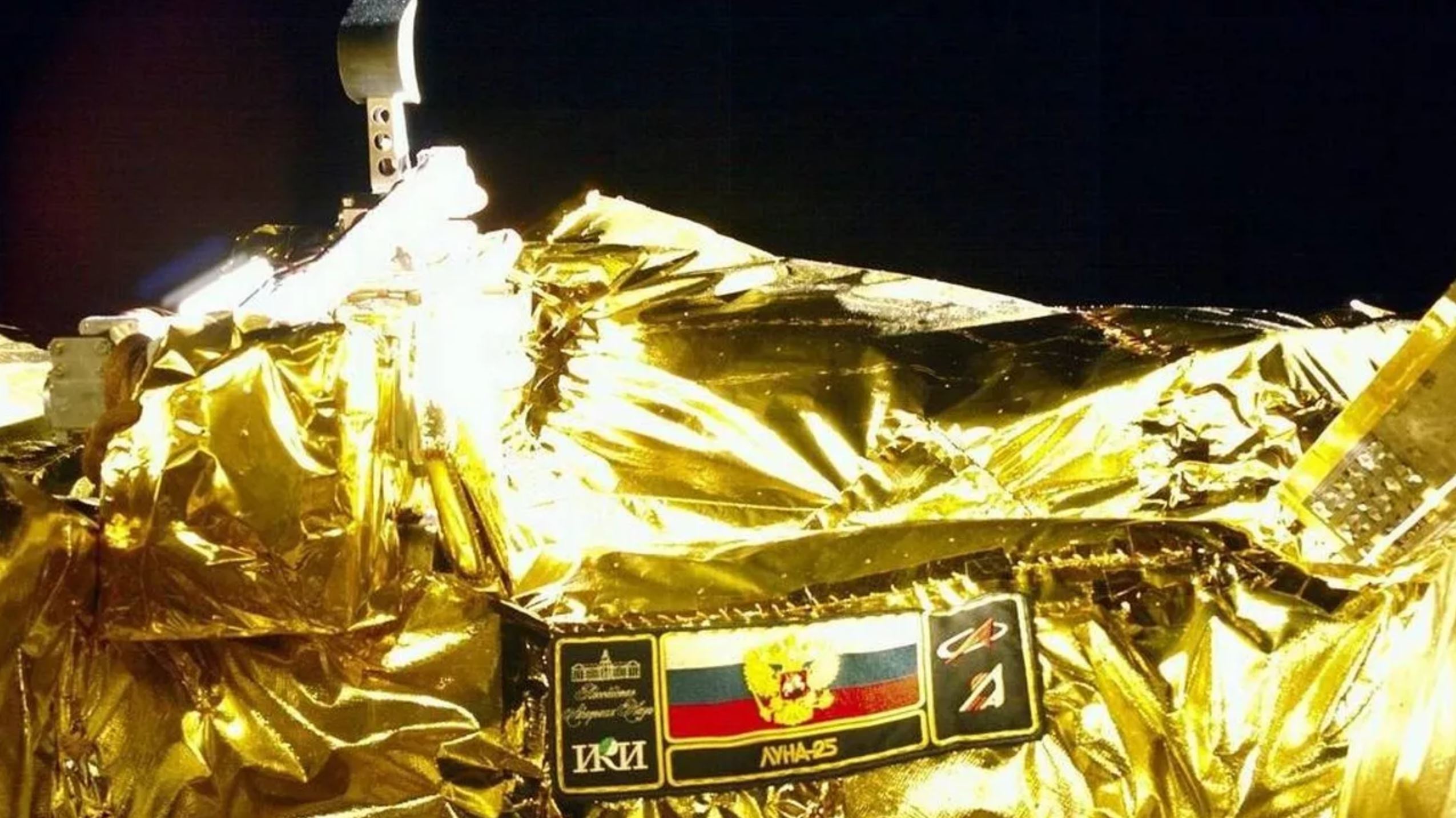HELSINKI — Russia’s Luna-25 mission ended in failure after crashing into the moon, space agency Roscosmos has announced.
A statement posted to the agency’s Telegram social media channel early Aug. 20 confirmed that an anomaly during an Aug. 19 maneuver to lower Luna-25’s orbit resulted in the spacecraft impacting the lunar surface.
The spacecraft was scheduled to attempt a soft lunar landing Aug. 21, near Boguslawsky crater, located approximately 70 degrees south latitude in the vicinity of the south polar region of the moon.
Roscosmos announced Aug. 19 that at 7:10 a.m. Eastern that day Luna-25 was instructed to fire its engines to send the spacecraft into a “pre-landing” orbit around the moon. The planned maneuver was anomalous, however.
“An emergency situation occurred on board the automatic station, which did not allow the maneuver to be performed with the specified parameters,” according to a translation of the Roscosmos statement.
The agency clarified Sunday that contact was lost with the spacecraft around 7:57 a.m. Eastern. Measures taken Aug. 19 and 20 to reestablish contact with Luna-25 were not successful, according to the Aug. 20 statement.
A preliminary analysis revealed that a deviation of the actual parameters of the impulse from those calculated resulted in the spacecraft colliding with the lunar surface, according to a machine translation of the statement.
“A specially formed interdepartmental commission will deal with the issues of clarifying the reasons for the loss of the Moon,” the statement read.
The Luna-25 mission launched on a Soyuz-2.1b rocket from the Vostochny Cosmodrome in Russia’s Far East Aug. 10.
The mission had endured lengthy delays stemming from technical issues and resource constraints. It carried a number of science payloads but was mainly a technology demonstrator for future lunar landings later in the decade.
That technology, stripped of a European navigation camera following Russia’s invasion of Ukraine in February 2022, could not be tested. The country’s previous lunar landing was Luna-24, a Soviet-era sample return mission, in 1976.
The loss of Luna-25 is a blow to Russia’s own plans as well as wider cooperative efforts. The mission was also nominally part of the China-led International Lunar Research Station (ILRS). The Luna-25 launch was attended by Wu Yanhua, a senior official involved in China’s deep space exploration projects.
A ILRS roadmap unveiled in St. Petersburg, Russia, in June 2021 noted that Russian super heavy-lift launch vehicles would share the burden of launching major pieces of infrastructure for the station in the 2030s. Observers have expressed doubts on Russia’s capabilities to contribute significantly to the project following its occupation of Ukraine.
Luna-25 was being described in the media as being in a race with India’s Chandrayaan-3 lander to set down near the moon’s south polar region. Chandrayaan-3 successfully lowered its lunar orbit Aug. 19, setting it up for a landing attempt at a similar latitude to Luna 25.
Chandrayaan-3’s landing is expected around 8.34 a.m. Eastern Aug. 23. A further mission, the Smart Lander for Investigating Moon (SLIM) by Japan’s space agency JAXA, is scheduled for launch on a H-2A rocket Aug. 25. SLIM is a landing technology demonstrator aiming to make exploration more precise and economical.
